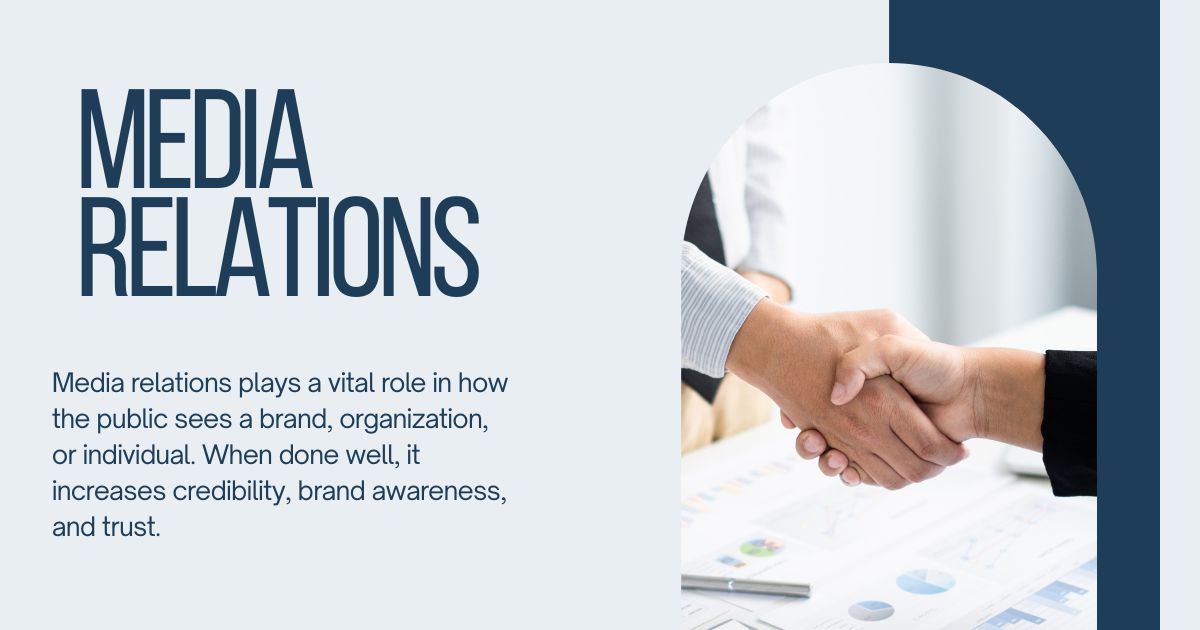What Is Media Relations?

Strong 8k brings an ultra-HD IPTV experience to your living room and your pocket.
In a world overflowing with digital content, media relations remains a powerful cornerstone of public relations (PR) strategy. But what is media relations, and why is it so vital for brands and organizations today? Let’s dive into the definition, objectives, and strategies behind effective media relations in today’s evolving communication landscape.
Understanding Media Relations
Media relations refers to the strategic practice of working with media outlets—such as journalists, editors, bloggers, and news producers—to communicate a company’s message, promote stories, and build public awareness. Unlike advertising, media relations seeks earned media rather than paid placements.
In simpler terms, it involves managing interactions with the press to get favorable coverage for your brand, product, service, or event. When done right, media relations builds credibility, trust, and visibility—all without a direct marketing push.
Media Relations vs. Public Relations
While the terms are sometimes used interchangeably, media relations is a subset of public relations (PR). PR encompasses all relationships with stakeholders—employees, investors, communities, and more—while media relations focuses specifically on engaging with journalists and media channels.
So, when someone asks “what is media relations?”, you can think of it as the arm of PR that connects brands to the press.
The Role of Media Relations in Modern Communication
In the digital age, traditional media has expanded to include online publications, podcasts, influencers, and social media journalists. This expansion makes media relations more relevant—and more complex—than ever.
The main goals of media relations are:
To secure press coverage in newspapers, magazines, TV, radio, and online platforms.
To position your brand as a thought leader by sharing expert commentary or insights.
To control the narrative during a crisis or controversy.
To increase credibility through third-party endorsements.
To build long-term relationships with media professionals who can amplify your message.
Whether you're a startup, nonprofit, corporation, or public figure, media relations can make or break how the public perceives you.
Key Components of an Effective Media Relations Strategy
To understand “what is media relations?” in practice, it's important to break down its core components:
1. Media List Building
It all starts with building a targeted media list. This involves identifying the journalists, bloggers, and influencers who cover topics relevant to your industry or niche.
Factors to consider include:
The reporter’s beat (e.g., tech, lifestyle, business)
Media outlet reach and audience demographics
Past articles or tone of coverage
2. Press Releases and Media Kits
Media relations professionals prepare press releases, which are formal announcements designed for the media. These releases follow a structured format and provide essential facts about a product launch, event, company news, or crisis.
A media kit may also be prepared. It includes background information, high-resolution images, executive bios, and fact sheets that help journalists quickly understand the brand.
3. Pitching Stories
A good pitch is personalized, relevant, and compelling. It’s where storytelling meets strategy. You want to offer journalists something newsworthy—such as a trend, unique data, or an exclusive interview opportunity.
The art of media pitching requires:
Crafting subject lines that stand out
Understanding editorial calendars
Being concise and respectful of time
4. Media Training for Spokespersons
A great story can fall flat if the spokesperson isn’t media-ready. Media training prepares executives or representatives to handle interviews with confidence, accuracy, and poise.
Training covers:
Key message delivery
Bridging techniques (to steer questions)
Handling tough or unexpected questions
5. Crisis Communication
One of the most sensitive aspects of media relations is crisis management. In times of negative press or public backlash, brands must communicate transparently and swiftly.
Crisis media relations includes:
Drafting holding statements
Managing press conferences
Monitoring sentiment and media coverage
Why Media Relations Matters in 2025
In today’s trust-challenged environment, earned media is more powerful than ever. Paid ads can be ignored or blocked—but a journalist’s article carries weight. It offers validation and third-party credibility.
Here’s why media relations still matters:
Trust: People trust journalists more than paid ads.
Visibility: A well-placed story in a national outlet can reach millions.
SEO Value: Online media mentions can generate backlinks and boost your website’s visibility.
Investor Interest: Positive media coverage can attract stakeholders and partners.
Reputation Management: It helps shape perception, especially during a crisis.
Examples of Successful Media Relations
To understand the impact of media relations, let’s look at two examples:
Example 1: Small Business Breakthrough
A small vegan bakery in Brooklyn gained national attention after a local news station featured its eco-friendly packaging. The media spotlight led to an influx of orders, social media growth, and partnerships with local grocery chains. All from one local story—amplified through proper media relations.
Example 2: Corporate Crisis Recovery
A major airline faced backlash after a viral video of poor customer service. The company’s PR team quickly issued a press statement, arranged media interviews with leadership, and partnered with major news outlets to show changes in policy. As a result, public sentiment gradually improved.
How to Measure Media Relations Success
Knowing how to measure results is key to any media relations campaign. Here are common KPIs:
Media impressions (how many people potentially saw the coverage)
Share of voice (your brand mentions vs. competitors)
Message pull-through (did your key messages appear?)
Website traffic from referral media links
Sentiment analysis of coverage tone (positive, neutral, or negative)
Media coverage is not just about quantity but also quality and relevance.
Tips for Building Strong Media Relationships
Media relations is about relationships—not just coverage. Journalists get hundreds of pitches a day. To stand out, consider the following:
Be helpful, not pushy.
Respect deadlines.
Share timely and relevant stories.
Personalize your outreach.
Follow up politely, not aggressively.
Thank them—even when they don’t cover you.
Over time, trust builds, and your brand becomes a go-to source for information or commentary.
Final Thoughts
So, what is media relations? It’s more than sending out press releases. It’s a strategic effort to build meaningful relationships with the media, earn trust, and shape public perception—without paid advertising.
In an age where audiences value authenticity and trust above all, media relations has never been more critical. When brands approach media as a partnership rather than a transaction, the rewards are long-lasting.
Note: IndiBlogHub features both user-submitted and editorial content. We do not verify third-party contributions. Read our Disclaimer and Privacy Policyfor details.


